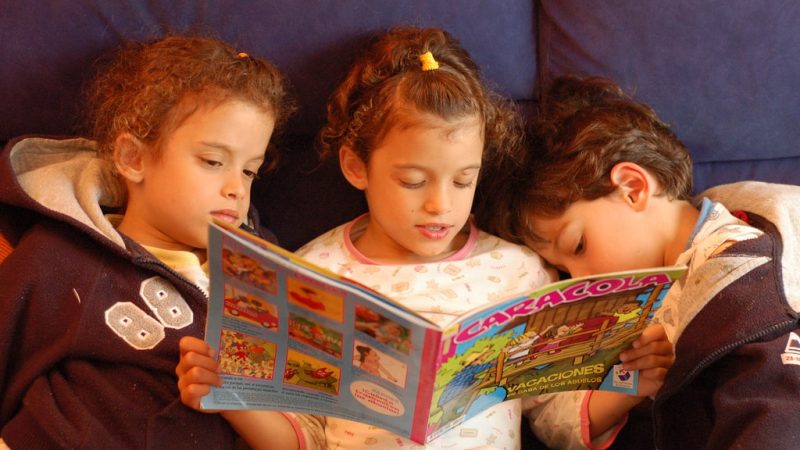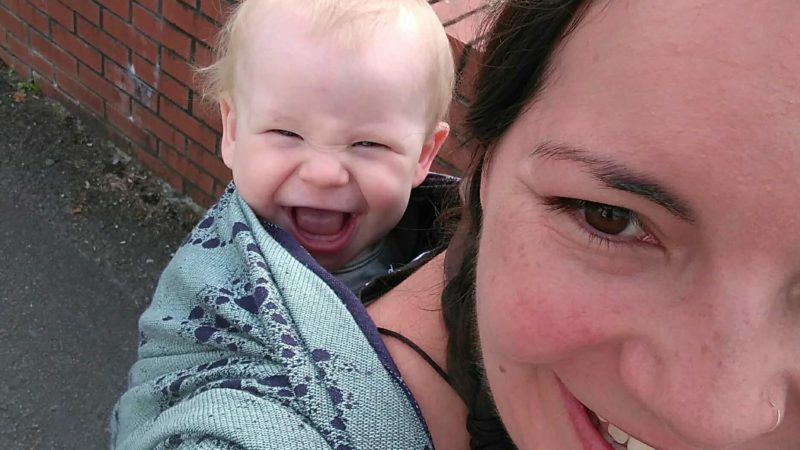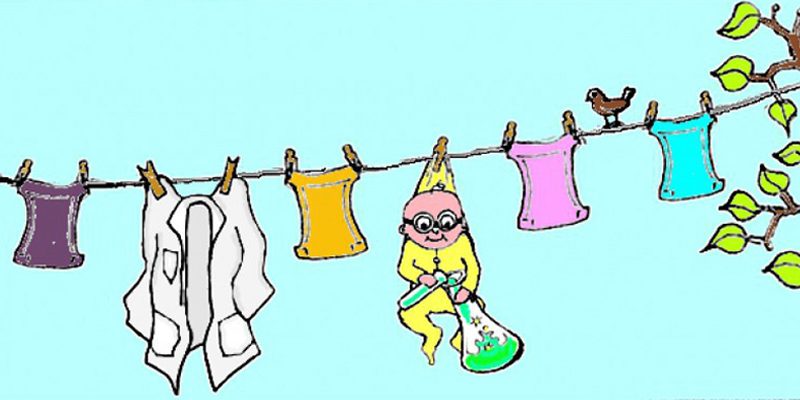
Children’s Gender Development – a Q&A with Dr Lauren Spinner
My name is Lauren Spinner. I am a Developmental Psychologist and my research focuses on children’s gender development. I’m particularly interested in how children come to understand gender norms and how/why children are motivated to conform to them in terms of their attitudes and behaviour.
I take a socio-cognitive viewpoint, which means that I think the environment has a huge role to play in children’s understanding of gender (i.e. parents, peers, media), but also that children themselves are cognitively motivated to find out more about the social categories to which they belong (i.e. they play an active rather than passive role in learning about gender).
My research so far has looked at children’s and parents’ toy preferences and unconscious gender biases; the extent of gender stereotyping in children’s magazines, and the effect of counterstereotypic peer models on children’s gender flexibility.
You can find a couple of articles here if you’d like to read more:
- Breaking Gender Stereotypes in the Toy Box
- Peer Toy Play as a Gateway to Children’s Gender Flexibility
Thanks for inviting me to the discussion! I’m looking forward to hearing all of your questions and ideas!
Rebecca (PSG): Your research sounds fascinating! And very relevant. Would you be able to sum up for us – briefly – what you’ve found so far?
Lauren: Yes, sure. So far I found a disconnect between children’s and parents’ gender-typed views. So children tend to possess very rigid in views in terms of what girls and boys can play with, but parents appear far more egalitarian. However, children expect their parents to hold the same views as them.
I find this really interesting because one reason for this could be that parents are not completely honest when they answer research questions about gender-typed attitudes – due to social desirability, and/or children may pick up on non-verbal cues from their parents about what is right/wrong for them to play with according to their gender.
PSG B: That’s interesting – we did one of your dept’s tests at the Boing festival, and I was shocked by my 8yr old’s responses (I’m a full-time employed scientist, my husband is the at-home parent), as she judged that she couldn’t become a scientist, doctor or firefighter, but could see herself as some traditionally female roles. I was wondering where these attitudes come from!
Lauren: So, for this reason I am also interested in non-verbal behaviour and unconscious gender biases which may influence this. I have done some eye-tracking research to investigate this and found that although parents explicitly appear less gender biased when I question them, their unconscious biases are in fact even stronger than children’s!
PSG C: That’s so interesting about the difference in views between parents and child and the reasons for that. I remember my daughter age about 4 being adamant that only men could be doctors, despite the fact that she’d only ever seen a female doctor, I had a female Dr friend and I don’t think she’d ever met a male Dr.
PSG A: This is so interesting. One of our group suggested we might look at the differences between what parents say and what they do – measuring how much kids are influenced to gender stereotypes and how stereotyped the parents’ behaviour is in the home (e.g. who actually does all the childcare / housework / what kind of work etc).
Do you know if any research has been done into this?
Lauren: Yes, there has been some research into this but lots more could be done, so it’s definitely an avenue worth exploring. There’s some great sexism questionnaires that could be administered to parents alongside some observational work. Observing non-verbal cues such as pointing or guiding towards certain toys/play styles hasn’t been done very much and would be very interesting.
PSG B: Parents grew up in a different time – even if we’re confounding stereotypes ourselves, we’re aware of them (& maybe reinforced through family)
As well as printed materials, I also wonder about clothing – few nurseries have a ‘uniform’ (e.g. gender neutral sweatshirt), so many young kids guess others’ genders by their clothes, and make assumptions.
PSG G: Interesting. A lot of the nurseries round here have sweatshirts
Lauren: Yes, I see a lot of shocked parents when they see their children’s responses! But I can assure you that this is very typical (unfortunately) as children receive gendered messages from so many sources beyond their parents.
PSG C: Yes I wonder if a part of this could be the discrepancy between what we as parents know to be possible – e.g. I know women can work as firefighters – and what we know to be ‘standard’ in our society – I know that it’s relatively unusual to be a female firefighter. We are aspiring to equality but know it’s far from equal at the moment.
Lauren: Yes, very common! Particularly at that age. Children tend to hold very gender rigid views between the ages of 6 and 8 years
PSG B: Also the books they see at school, plus what some teachers tell them/ demonstrate unconsciously. Although many books are quite balanced, some can be very gendered.
Are these strong views part of their exploration of ‘what makes a girl a girl’, the understanding that their gender doesn’t change, and other fundamentals that they’re coming to grips with?
Lauren: Yes, partly. Depending on their stage of cognitive development, children show different levels of flexibility. So it is inevitable to some extent that children will display rigid views because they categorise things in such a black and white when they begin learning about social categories. This becomes more flexible from age 7 years onwards as cognitive abilities develop.
PSG D: Do you know if anything’s been done to look at whether there’s that same parent/child discrepancy among home-schooled kids, say? I *feel* like I’m honest in saying that I don’t operate gender stereotypes about what kids can play with, but my Y1 daughter polices this stuff extremely strictly and I wonder if she’s picking up other influences from school that drive her this way.
Lauren: I think that there has been a small amount of research that has looked at the extent of gender stereotyping in home-schooled children, but I couldn’t say what the findings were without looking it up. But it is logical that home-schooled children (depending on parent roles) may be less stereotypic in their attitudes because peers are such a strong enforcer of gender norms.
PSG D: Yes, I suppose you get some interesting confounding factors in some home-schooling communities.
PSG E: How much do we influence those bias just by calling them continuously boys” and girls”?
I haven’t read the research yet but I would be interested if there is a “language related” issue combined to the difference kids perceive
Lauren: I don’t know the extent, but it’s definitely logical that by continually referring to girls’ and boys’ gender and splitting into groups that we make gender stereotypes more salient as we highlight that they belong to one group and not another.
PSG C: I read your Peer Toy Play paper yesterday, it was fascinating although I think I’d need to read it again (maybe several times ? ) to understand all of it.
Lauren: Thank you! Yes, some of the measures are a little confusing!
PSG L: I’m just wondering whether the parents in your research were aware of the research question in advance, and how far this would affect their answers.
Lauren: The aim of the study is always unknown to participants until after they have completed all of the measures. Otherwise this knowledge would almost certainly affect their answers. Some may figure it out, but there’s only so much one can do to hide what the study is about. But they are not told outright before it starts.
PSG F: Have you done any research with parents trying to take on a more gender neutral parenting approach?
Lauren: Not specifically, although most parents who sign up to take part in my studies do so because they want to learn more about how to challenge gender stereotypes with their children. So they probably have an interest in this more than the average person.
PSG F: Have you looked into any specific cultures where gender is less enforced?
Lauren: All of my research has been conducted in the UK, but cross-cultural studies into gender are fascinating because they provide so much evidence that gender is a social construction. Masculine/feminine norms are not the same world over – therefore contradicting biological or evolutionary arguments that gendered behaviour and attributes are innate.
PSG F: Or parents with non binary or trans kids?
Lauren: No, I haven’t, but I find others’ work on this very interesting!
PSG B: I was also reading an interesting article recently about how difficult trans & others find it to find personal pronouns in languages that are highly gendered (e.g. German & especially French where there’s no neutral) – I wonder if views are different in these cultures as ideas can’t be expressed the same?
Lauren: this is something I think a lot about too – how we are restricted by our language, and especially for those whose language uses masculine/feminine pronouns. I think to some extent the rate at which gender stereotypes can change is limited because of the vocabulary available to us.
PSG H: Has your research shown that gender bias is presented differently with different generations?
If so, is it getting better or worse with each generation?
Lauren: I haven’t looked at generational differences myself, but I do know that research has shown gender stereotypes have become more flexible over time but only for women/girls not for men/boys. So, it’s not okay or admirable for a woman/girl to behave in a typically masculine way (e.g. show leadership skills) but it’s still not acceptable for a man/boy to possess feminine traits (e.g. to be emotional). This is linked to the male/female status in society. Men are the higher status group; therefore it’s ‘good’ to work towards behaving in typically masculine ways, but not the other way round.
PSG H: Thank you. And yes, I can see evidence of this in society, such as male suicides being at an all time high. Extreme, but is this one of the results of males being brought up to ‘be tough’ etc…
PSG I: I’m interested to know what it is that kids pick up on most. Is it people’s actions, words, non-verbal communication?
And what the best tools are to combat unconscious gender bias in my own behaviour. Today I had great difficulty finding the non-gendered term for fireman!
Lauren: It’s certainly not easy! Gendered language is so ingrained in all of us – even those who try to fight it the most! There’s strong evidence to show that unconscious biases influence automatic behaviour more readily than explicit attitudes. One way to check your own unconscious biases is to do an implicit association test – just google and you will find. You can actually reduce your own implicit biases by doing these tests regularly, so over a longer period of time the improvement should be reflected in your behaviour!
PSG I: Great. I’ll do that. I can’t believe how difficult it is. Despite me being a logical, tool wielding science type!
I got to firefighter after a split second. It’s just hard not to append -man after everything. Despite my background.
PSG J: Oh I do the same! It’s so ingrained.
PSG K: Does anyone have a non gendered term for fisherman? I live near a working harbour and it’s hard to talk around it.
PSG G: People who fish? :/
PSG K: Doesn’t quite roll off the tongue ? I currently try to avoid it and talk about the fishing boats… It’s a hard one.
PSG J: Have you read Dale Spender’s Man Made Language? It’s really good.
Lauren: No, I’ll check it out – thanks!
PSG A: One of the questions we’re considering exploring is where children get gender stereotype messages from (e.g. peers, parents, teachers etc) – which are most influential.
I know this is your subject! Do you think there are gaps in the research here?
One angle we considered is possibly looking at grandparents and/or non-parent caregivers by the amount of time spent.
Lauren: That’s very interesting. There has been some research looking at the role of teachers (and it isn’t very positive, I’m afraid – most tend to reinforce stereotypes, even if they don’t mean to!), but I don’t know of anything looking at grandparents. This could be a good idea to explore and would link in with the generational aspect someone mentioned above.
PSG M: One of the issues that seems to crop up with our research questions is how we can disentangle gender stereotypes from actual gender differences when looking at people’s perceptions of children’s behaviour. e.g. is a boy perceived as boisterous because of gender stereotypes or because he actually is boisterous? How have studies addressed this? One of our potential questions is about childcare settings (where gender would obviously be known by the staff), so the issue might be especially difficult for that one!
PSG F: This is why I think looking at gender non conforming kids in comparison would be a great way to separate out some of these differences.
PSG N: That’s a brilliant question! I get a bit worked up when people start about gender stereotypes when it’s actually just differences or vice versa!
Lauren: It is difficult to disentagle because one informs the other – so, gender stereotypes informs behaviour (what is ‘right/wrong’ for boys and girls), and gendered behaviour reinforces stereotypes. It is almost impossible to separate the two, but you can use different measures in research to try to capture them separately.
PSG B: Could we get some compliant families to ‘play a game’, where young kids dress as the opposite gender & are videoed playing, versus dressed as their declared gender. See how adults rate the behaviours shown? There’s a chance that the kids might change their behaviours, though (but maybe less so if we just ask them all to wear jeans, & just give them ‘team jumpers’?
Lauren: There certainly are gender differences in regards to lots of aspects of children’s (and adults’ behaviour/attitudes), but I think the interesting question to what extent have these been formed by the social environment. Are the differences due to stereotype conformity or something else?
PSG G: I think it becomes a self fulfilling prophecy as well?
If children continually hear that girls do x and boys do y – or oh yes, he’s a boy to explain behaviour then that will become internalized?
PSG F: 100% agree
PSG N: yes I agree.
Lauren: One way to overcome this is to rate reports of behaviour with the gender and name of the child removed vs. with the gender/name included. This produces very interesting results! Boys much more likely to be rated as boisterous if people know it is a boy compared to if they had no awareness of child’s gender.
PSG C: The group has talked about doing this using animation (probably expensive), or comic strips – is that the kind of thing you mean? Or simply text description of a behaviour that the participant then assesses?
Lauren: Yes, you could do it in terms of vignette, which is like a picture-book story or comic strip. Or you could try to make the examples look like ‘real’ school/pre-school reports to increase how realistic they are. Have two versions – one with names, one without. One boy, one girl. Might also be interesting to see if there’s a gender difference among parents – do mums/dads rate them differently?
PSG P: Or couldn’t you do it with the same images having boy’s names for some people and girl’s names for other people?
PSG O: Does this have to be done in a paired design – so respondents have to judge with and without names, or do some get no names and some get names?
Lauren: You could do it either way. To minimise group differences it is best for the same participants to take part in both conditions (named vs anonymous), but then you run the risk of them guessing the aim of the study and adapting their behaviour. You could argue it either way and neither would be the ‘wrong’ approach.
PSG J: When a child has what seems to be a “gender identity” (I use quotes, because I’m not sure the usage here is the same as historically e.g. in your links) different to their sex – to what extent do you think they are coming to these conclusions about their own gender identity due to stereotypes?
How comfortable, as an researcher do you feel about tackling this question in the current political climate? Do you think the current political climate is preventing important research, even important conversations about this taking place?
Do you think the new phenomenon of trans children is pathologising gender non conformity?
Lauren: I don’t look at transgender issues in my research, so difficult to answer all of your important questions, but I do think a problem is that because the western world still sees gender in a binary way (male or female) it leads to gender dysphoria being seen as a disorder. If it was accepted that in fact gender is multi-faceted and not simply one category or the other then the idea of ‘trans’ disappears. Just because you have male or female genitals (or both/neither) that shouldn’t define how you want to express yourself. Not sure that answered your question, but didn’t want to ignore you!
PSG J: Thanks for your response! I too think that once we unpick gender then “trans” disappears.
PSG N: One thing that I would really like to know more about is where a child gets the whole ‘he/she’ thing from. When my two year old sees an animal in a field, or gets a new cuddly toy, it’s always a ‘he’ even when it’s wearing a dress (obviously referring to the cuddly toy there!) even if I always call it a she (when referring to a friends female dog for example) lily will always say ‘he’. With regard to the neighbour’s dog, I’ve called her a she ever since the first day she arrived nearly two years ago, so where does my little one get the ‘he’ thing from?
I’m trying to work out if it’s a social programming thing or just a ‘sh is a hard sound to make’ thing!
Lauren: Could be partly own-gender bias – children often refer to novel characters/objects as the same gender as their own. Also, most characters in children’s media are male, so could be using this information.
PSG A: Gender stereotypes among children seems to be a fairly well studied area. Are you able to give us an idea of where any gaps in the research are?
Lauren: Looking at the role of fathers! Also, the effect of gender-typed media. Lots of evidence to show that it exists, but less experimentally testing its effect. So, e.g. you could give one group typical books/magazines/tv shows to read/watch, another group counterstereotypic versions of these, and a control group who would read/watch something neutral (e.g. nature show) over a period of time and measure their gender flexibility before and after. I can suggest some measures.
PSG P: I spend a lot of time watching nature (or dinosaur) documentaries with my son, and TBH, I’m not convinced that most of them count as neutral. For a start, they are nearly always presented/narrated by men…
Lauren: Yes, good point. In terms of the focus of the show it should be fairly gender neutral (unlike most children’s tv shows) but the gender of the narrator could be important. You could try to think of another option that would be gender neutral – it’s not easy!
PSG P: No, I can imagine it’s not easy! Once I’ve started really noticing this stuff with children’s media it’s everywhere really. Even aside from the gender of the presenter, sometimes the way they talk about the animals can be really gendered. And also just kind of constantly reinforcing the idea that all living creatures naturally have highly distinct roles based on gender…
Lauren: The biggest gap in the research is concerning fathers. They are a very understudied group and most research into parent/child gender has been done with mothers, even though we know from what little research there is that dads are more influential on children’s gender rigidity and are stronger enforcers of gender norms. If this is something you are interested in and think you would be able to get dads involved in research then this is definitely worth pursuing!!
PSG P: Oooh, now that’s an interesting idea!
Maybe we could include Dads in the mix if looking at the which messages matter most/grandparent / influencers question?
PSG G: Oo great. Husband would be up for this I think
PSG P: Our partners might not be entirely typical though:-)
PSG G: Are you saying I may have been leading him down a more gender neutral path….? 😉 We finally watched No More Girls and Boys just the other night
PSG P: Well, I’m guessing that women who choose to join a LTBT experiment group might not choose a mainstream macho type guy with very rigid ideas about gender to be their life partner…
PSG G: oo good point…
Related Links
- Join the Let Toys Be Toys – Parenting Science Gang
- Read more Q&As with experts on gender, stereotypes and childhood.
Lauren Spinner’s research
- Breaking Gender Stereotypes in the Toy Box
- Peer Toy Play as a Gateway to Children’s Gender Flexibility
Let Toys Be Toys campaign
- Resources for schools designed by Let Toys Be Toys
- Further resources for schools
- LTBT on Facebook
- LTBT on Twitter
Picture Credit:
 Thanks to César Astudillo – licensed via Flickr Creative Commons 2.0.
Thanks to César Astudillo – licensed via Flickr Creative Commons 2.0.


